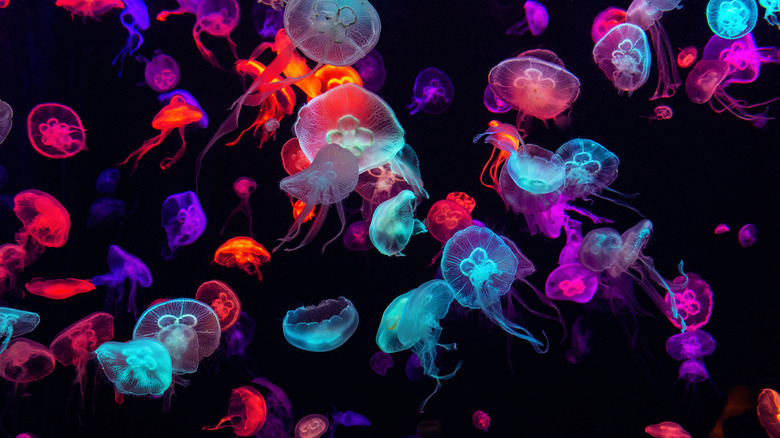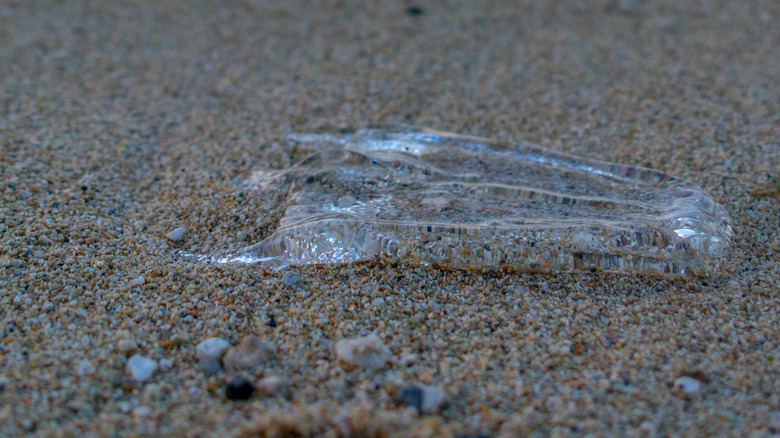Why You Should Really Fear Common Kingslayers
When most people think of deadly, spooky creatures that lurk in ocean waters, they imagine toothy great white sharks, killer whales, or maybe even a moray eel. You'd do well to think of a nearly transparent jellyfish just over an inch long, as the malo kingi or Common Kingslayer jellyfish is one of the most venomous creatures of the sea, and its sting can be deadly (via Scientific American). Common Kingslayers are a species of box jellyfish and can be distinguished by its transparency and halo-like rings around the tentacles.
You don't have to be royalty to be affected by the jellyfish. The jellyfish is named after Robert King, an American research scientist who was fatally stung while vacationing in Queensland, Australia. Like most things that want to kill you, Common Kingslayers are most often found in Australia, attracted to the tropical waters. When King's body was studied, signs of a new species of jellyfish were discovered that, though tiny, pack a serious punch.
The Kingslayer is nearly impossible to spot
It's not just the venom of a Common Kingslayer that makes it so terrifying; they're extremely difficult to spot. According to iNaturalist, these tiny terrors can be no bigger than the size of a human thumbnail, with a bell that grows up to just over an inch in length. Their bell is transparent and colorless, so spotting one in the water is a tough task. The easiest way to tell if there are Common Kingslayers around is to get stung by one, but that's an experience no one should have to experience.
The sting of a malo kingi causes Irukandji syndrome, a condition characterized by severe pain and nausea (via iNaturalist). It's likely that more mature Kingslayers are more potent, as some who have been stung suffered only mild symptoms, and the unlucky Robert King is still the only confirmed instance of death from the species. Still, it's something to be wary of in case you ever find yourself snorkeling in the waters off Queensland.

